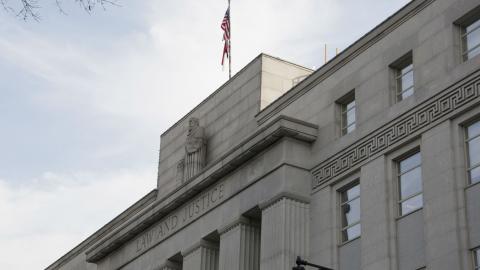Supreme Court to Remove Portrait of Chief Justice Thomas Ruffin from Its Courtroom
Article contents

Chief Justice Cheri Beasley announced today that the Supreme Court of North Carolina will remove its portrait of former Chief Justice Thomas Ruffin from the Supreme Court courtroom. The portrait will be replaced with the seal of the Supreme Court. The decision of the Court comes just weeks after an official recommendation was submitted by an advisory commission established by the Court in 2018 to explore the issue. Read the Supreme Court's order.
“It is important that our courtroom spaces convey the highest ideals of justice and that people who come before our Court feel comfortable knowing that they will be treated fairly. The Court’s decision to remove the Ruffin portrait is a tremendous reflection of the progress that has been made since the time Chief Justice Ruffin served on the Court,” said Chief Justice Beasley. “We thank the members of the advisory commission for their thoughtful deliberation over the last year and for their recommendations.”
The Supreme Court formed the Advisory Commission on Portraits in 2018 following publication of an op-ed calling for the removal of Ruffin’s portrait. The commission was tasked with considering “matters related to portraits of former justices” and submitting final recommendations to the Court by December 31, 2019. That deadline was later extended by the Court. The commission submitted its final report and recommendations to the Supreme Court on December 14, 2020.
Ruffin served as chief justice from 1833 to 1852. A slave owner himself, Ruffin authored opinions as chief justice defending the institution of slavery and was regarded even by his contemporaries as particularly brutal in his ownership of slaves. Calls for his legacy to be re-examined and for the removal of the prominent, larger-than-life portrait from the Supreme Court’s courtroom often cite Ruffin’s most notorious opinion, State v. Mann. In that case, in which an enslaved woman had been shot in the back after fleeing a brutal whipping, Ruffin rejected the notion that a slave owner could be guilty of assault or battery of an enslaved person, writing, “The power of the master must be absolute to render the submission of the slave perfect... This discipline belongs to the state of slavery.”
The Supreme Court’s portrait collection, one of the most complete in the country, is owned by the North Carolina Museum of History under an agreement that permits the Court to display the portraits. The Court will consult with the Department of Natural and Cultural Resources to coordinate the removal of the portrait. A smaller portrait of Ruffin was removed from the Orange County courthouse earlier this year as was a statue of Ruffin in the North Carolina Court of Appeals, a building which once bore his name.